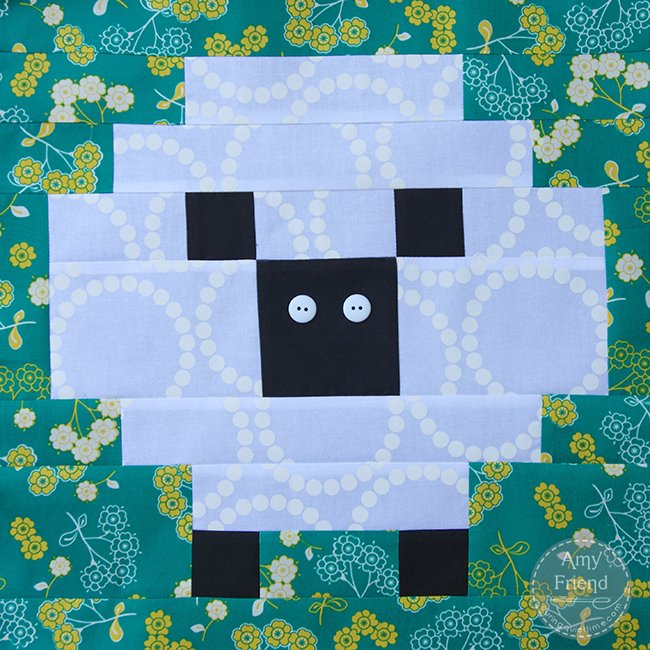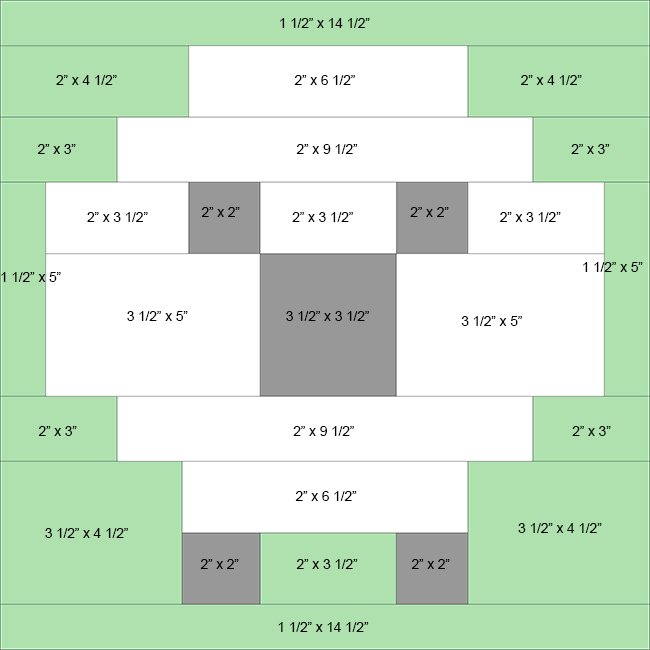If you have been searching for a Sheep quilt FREE PATTERN, you are in the right place. Whether you are a beginner or a seasoned quilter, creating a quilt with an adorable sheep design is a fun and fulfilling project. In this article, we will guide you through everything you need to know to make a charming sheep quilt, complete with a FREE PATTERN that is easy to follow and brings warmth and personality to any space.
Quilting has long been a beloved craft, offering a creative outlet as well as a practical way to produce beautiful bedding, wall hangings, or gifts. The Sheep quilt FREE PATTERN we share today is designed with simplicity in mind, so you can focus on enjoying the process. Whether you’re sewing for a child’s room, a baby shower gift, or simply to add a touch of farmhouse charm to your home, this pattern is a delightful choice.
In addition to providing clear instructions, we’ll also share tips on fabric selection, stitching techniques, and ways to personalize your quilt. So, gather your supplies, and let’s dive into the world of cozy quilts with our Sheep quilt FREE PATTERN!

1. Choosing Materials for Your Sheep Quilt
The first step in creating your Sheep quilt FREE PATTERN is selecting the right materials. High-quality cotton fabric is always recommended for quilts because it is durable, soft, and easy to work with. Choose a variety of whites, creams, and light grays for the sheep’s body to create a soft, fluffy look.
For the background, consider soft blues, greens, or even pastel yellows that will make your sheep stand out. You might also want to pick fabrics with small prints or subtle textures that add depth without overwhelming the design.
Batting is another essential component. A lightweight, breathable batting works well, especially if the quilt is intended for a baby or child. It provides just the right amount of warmth and softness.
Don’t forget the thread. Matching your thread color to your fabric will create a seamless finish, while using contrasting thread can add a touch of whimsy and highlight your quilting lines.
Finally, consider the binding fabric. A coordinating or contrasting binding will frame your quilt beautifully and give it a polished edge.
Having the right materials on hand before you begin ensures your Sheep quilt FREE PATTERN project goes smoothly and the final product is both beautiful and durable.
2. Cutting and Piecing the Sheep Quilt Blocks
Once your materials are ready, it’s time to cut and piece your Sheep quilt FREE PATTERN blocks. Precision is key during this stage to ensure all pieces fit together perfectly. Use a rotary cutter and a clear quilting ruler for accurate measurements.
The sheep blocks typically consist of a combination of squares, rectangles, and triangles that form the body, head, ears, and legs of the sheep. Carefully follow the pattern’s cutting instructions to avoid fabric waste.
When piecing the blocks together, begin with the smaller units, such as the head and ears, and gradually assemble the full sheep shape. This makes it easier to keep everything aligned.
Press your seams as you go. Most quilters prefer to press seams to one side, but you can also press them open for a flatter finish. A well-pressed block will help ensure a neat quilt top.
Arrange your finished sheep blocks on a design wall or large table to visualize the final layout. This is your opportunity to adjust colors or placement before stitching the rows together.
Take your time during piecing. Rushing can lead to misaligned seams or a quilt that doesn’t lay flat. The beauty of the Sheep quilt FREE PATTERN shines through careful, thoughtful piecing.
3. Quilting Techniques and Finishing Touches

Now that your quilt top is assembled, you can move on to quilting. With your Sheep quilt FREE PATTERN, consider using simple quilting lines that follow the shape of the sheep to emphasize the design. You could stitch around the sheep’s outline or create gentle swirls to mimic wool.
Free-motion quilting is an option if you’re comfortable with it. This technique allows you to create custom designs that add texture and interest to your quilt. If you’re new to free-motion quilting, practice on scraps before moving to your quilt.
Straight-line quilting with a walking foot is another great choice. It provides a clean, modern look and is easier for beginners. You can quilt in the ditch (along seam lines) or create a grid across the quilt top.
After quilting, it’s time to bind your quilt. Attach the binding to the front with a sewing machine, then fold it over and stitch it by hand or machine to the back for a neat finish. Choose a binding fabric that complements the colors in your quilt.
Add any embellishments you like, such as small buttons for eyes or embroidered details to give your sheep extra character. Just ensure all additions are securely attached, especially if the quilt is for a child.
Finally, don’t forget to label your quilt. A small tag with your name, the date, and any special message makes your creation even more meaningful.
4. Customization Ideas for Your Sheep Quilt
One of the joys of using a Sheep quilt FREE PATTERN is making it your own. There are countless ways to customize your quilt to reflect your style or the personality of the person receiving it. Start by experimenting with fabric choices. Use bold, bright colors for a modern look or soft pastels for a classic, cozy feel.
Consider adding a name or date to the quilt using appliqué or embroidery. This is a wonderful option if you’re making the quilt as a gift for a baby shower or birthday.
You can also play with the size of your sheep blocks. Enlarging or reducing the block size lets you create different types of projects, from wall hangings to full-sized bed quilts.
Another idea is to mix in other farm animal blocks, such as cows or chickens, to create a farm-themed quilt. This adds variety and makes the quilt even more engaging, especially for children.
If you’re feeling adventurous, try incorporating textured fabrics like minky or fleece for the sheep’s body. These materials add a tactile element that little ones will love to touch.
Finally, think about the quilt’s backing. A fun print or coordinating solid color can add an extra pop of personality when the quilt is flipped over.
FAQ About Sheep quilt FREE PATTERN
What size is the finished sheep quilt?
The size of the finished quilt depends on how many blocks you use. A baby quilt may measure around 36″ x 48″, while a larger throw or bed quilt can be adjusted accordingly.
Is the Sheep quilt FREE PATTERN suitable for beginners?
Yes! This pattern is designed to be beginner-friendly. The blocks use basic shapes, and the instructions are straightforward, making it a great first quilting project.
Can I resize the sheep blocks?
Absolutely. The Sheep quilt FREE PATTERN can be resized by adjusting the cutting measurements proportionally. This gives you flexibility for different projects.
What type of fabric works best for this pattern?
High-quality cotton fabric is recommended because it’s easy to sew and durable. You can mix in textured fabrics for added interest if desired.
Do I need special tools to make the quilt?
Basic quilting tools such as a rotary cutter, ruler, and cutting mat are helpful. A sewing machine with a walking foot or free-motion foot is also useful for quilting.
How can I access the FREE PATTERN?
Many websites and quilting blogs offer free sheep quilt patterns. Make sure to download from reputable sources that provide clear instructions and diagrams.
Creating a Sheep quilt FREE PATTERN project is a rewarding and enjoyable experience that allows you to express your creativity while crafting something cozy and meaningful. From selecting materials to adding finishing touches, every step brings you closer to a beautiful handmade quilt that can be cherished for years. We hope this guide has inspired you to start your own sheep quilt. Please share your honest feedback and suggestions in the comments below—we’d love to hear about your quilting journey and any tips you have for fellow crafters!





